#Sant Pere’s Gate
Explore tagged Tumblr posts
Text




























Peñíscola was conquered during the French occupation by the Napoleonic general Suchet, on February 2, 1812.
#Peñíscola#conquered#2 February 1812#anniversary#Spanish history#Mediterranean Sea#Valencian Community#Province of Castellón#España#Baix Maestrat#summer 2021#original photography#old town#architecture#cityscape#tourist attraction#Castell de Peníscola#Sant Pere’s Gate#Iglesia de Santa María#Ermita de la Virgen de la Ermitana#beach#Spain#Southern Europe#Southern Spain#vacation#travel#landmark
2 notes
·
View notes
Text
Carrer del Portalet
🇪🇸 El Portalet es una calle empedrada en Besalú que se originó cerca del monasterio de Sant Pere, descendiendo entre el antiguo Hospital de Sant Julià y la casa de la familia Astruc. Se trata de una de las calles más antiguas de la localidad, construida entre los siglos IX y X. A lo largo de la historia, ha recibido varios nombres, pero el actual hace referencia a un antiguo portal de la muralla que se encontraba en el extremo más cercano al río Fluvià, conectando el pueblo con el camino que seguía el curso del río.
🇺🇸 El Portalet is a cobbled street in Besalú that originated near the Sant Pere Monastery, descending between the old Hospital of Sant Julià and the Astruc family's house. It is one of the town's oldest streets, built between the 9th and 10th centuries. Over the course of history, it has had various names, but its current name refers to an old gate in the town's wall, located at the end closest to the Fluvià River, connecting the town with the path that followed the river's course.
#el portalet#hospital de sant julià#siglos ix y x#siglo iz#siglo x#siglo ix#familia Astruc#río fluvià#fluvia river#besalú#sant pere#sant pere monastery#judaísmo#judaism#jewish#judío#cultura judía#judíos#jumblr#sephardic#sephardim#sephardic jews#sefardí#sefarad#cataluña#calle empedrada#cobbled street#portalet#carrer
1 note
·
View note
Text
Walking up to the Sant Pere d'Àger collegiate church in Àger, Ponent, Catalonia.
Sant Pere d'Àger was founded by Benedictine monks in the year 1034. Most of what is preserved nowadays was built at that time in Romanesque style, except for the entrance gate which was remade in the Renaissance.
It entered a period of decadence in the 15th century, when the area lost population. Finally, in 1592 the last monks abandoned it and it became a church. It was bombed in 1645 during the Catalan Revolt (aka the Reapers' War), and centuries later in 1829 it was turned into an army garrison and bombed again during the Carline Wars.
In the early 1900s, it was restored a bit, so nowadays, even thought it's in ruins, Sant Pere d'Àger can be visited. Only the church remains standing, but it forms an impressive ensemble with the walls that surround it and the nearby castle.

Video by Ara Lleida on their Instagram and photo by Ara Lleida on their website.
#àger#sant pere d'àger#catalunya#fotografia#travel#medieval#middle ages#monastery#reels#reel#travel photography#europe#monk#catalonia#countryside#cultural heritage#ruins
79 notes
·
View notes
Note
6!
your new home is alcúdia, in the es raiguer comarca (mallorca, balears)! it has 20,651 inhabitants, and it is divided into several population centers: alcúdia proper, platja d'alcúdia, port d'alcúdia, mal pas-bonaire, marina manresa, and son fe. you'll live in plaça de carles v 7, right in the center of alcúdia. you'll be 26 km (25 min by car / 30 min by bus) away from inca (34 k inhabitants), the closest big town, and 56 km (52 min by car / 1 hour by bus) away from palma.
the town was founded in 1298 by jaume ii of mallorca. the black death arrived in mallorca by the alcúdia port, so this was the most affected area in the island. in 1870 the yellow fever got to mallorca, but alcúdia managed to not get affected by closing off all of the city gates.
it has a ton of historical buildings: the roman theater of pollentia - a roman city close to modern alcúdia -, the sant jaume church, the town hall, the alcanada tower, the walls, the moll gate, and others. it is also right next to the nature preserve of s'albufera, the largest wetland in the balearic islands.
it also has a ton of festivities, like the cuttlefish fair (mid april), sant pere (june 29), the romería of the virgen de la victoria (july 1-2), saint christ of the alcúdia (celebrated every three years on july 26), the lanterns festivity (august 26), and sant esteban (december 26).
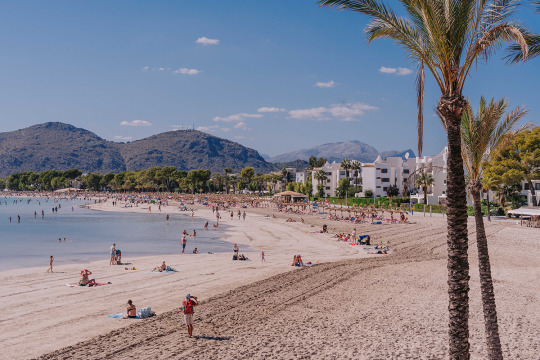

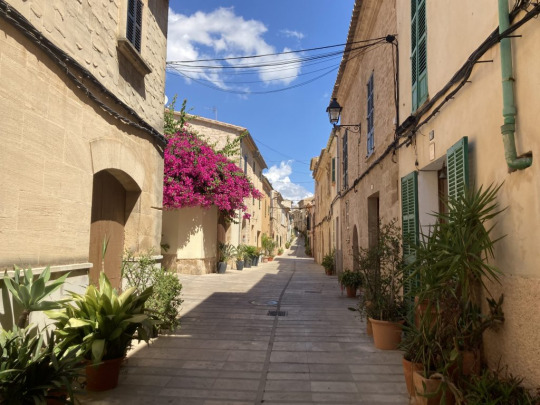

random spanish town ask game!
#ask#i find it insane how there's people who just live in balears#literally the luckiest people on earth
3 notes
·
View notes
Link
Aitana Bonmatí: “I have shown that I can be important”
Aitana Bonmatí, FC Barcelona player and brand-new winner of the Best Catalan Player of the Year Award with Piqué, analyzes the club's current affairs, women's football, its origins and its future.
“I am a young player but I have shown that I can be important”
"Maybe we are not the best team in Europe right now, but we will be"
“This team has a different mentality from other years”
Aitana Bonmatí i Conca (21 years old), a female Barça player, meets with Mundo Deportivo in her hometown, Sant Pere de Ribes. With only 21 years, she has already been a European champion with the inferiors of the Spanish National Team twice, has played a World Cup with the absolute and has reached a Champions League final with Barça. Her numbers this season with the Barca club endorse the role she is having: three goals and one assist in the First Iberdrola and two goals in the Women's Champions League.
Aitana, a student of CAFE (Sciences of Physical Activity and Sports), analyzes for MD her current role in Barça, its origins, objectives, the news of women's football in the league and in Europe and its near future.
Born in Sant Pere de Ribes (Garraf, Catalunya), you train at CD Ribes and CF Cubelles, tokens for FC Barcelona Women in 2016 with 14 years.
How do you feel being from such a small place and being in Barça?
For me it is a pride to be from this small town and take its name to the world, because when they talks about me they talks about Ribes and I like it because it is the place where I have grown up and it is a town that I love very much.
Are you still living here, do you keep your roots and your friendships?
Yes, I train in the Ciutat Esportiva del Barça but I still live here with my parents, but here I have everything, my partner, my friends, the family ... everything, and for me being here gives me more freedom, I am prefer a small town than a city. It is not a problem to always go to Barcelona, I’m getting used to and knowing what is best for you.
You come from the Club Deportiu Ribes, where as a child you played with boys, how was that time? Did you suffer or had to prove more than the rest to assert yourself?
It was a good time because in the end I learned a lot from playing with boys, both in Ribes and CF Cubelles, and I think I learned a lot because in the end the competitiveness that gives you to play with boys was not the same as with girls in those ages then. On the other hand, I did have a lot of fights with boys because at that time they did not accept that a girl who could compete with them, but that in the end made me stronger, more competitive and be the ambitious person I am today.
In what we have been in season you are having more prominence in Barça, with only 21 years, you have already started in 6 games, the last three playing the 90 minutes, you have only missed the match against Juventus in Italy. How do you look this season?
It is soon to assess how to say it is a super good season ... Even so, I am playing for many minutes but I will always say that I want more, I will not settle for what I play and I will be ambitious, because in the end, if I would not give way to improve every day and be a better player.
Do you expect to consolidate with a fixed position this season? Or are you still missing?
Yes, I am a young player but I have shown that I can be important, that I have many things to contribute to the team, especially in the midfield. It is clear that everyone must improve, but one thing does not take away the other, if the team needs me I will be there. Despite the age, I have enough experience that I did not have before, I have matured a lot. I used to shake my legs according to the opponent I played with, now I don't. I want to consolidate, I don't know when it will be, but I think I am in the process and that every season I am contributing more to the team.
Your natural position is midfielder, but we have already seen you playing right winger and against Logroño on the left. Do you like this more advanced position? What do you think you can contribute by playing above?
I always say that my favorite position is in the midfield, on the left or right, because that is where I can contribute my greatest virtues such as the movement of the ball, play one or two touches, play fast and see the spaces where you have to take the ball and also the arrival at the gate from the second line. But it is also good to play in other positions, regardless of the band because they always ask me the same, go inside to help and leave the space to the fullbacks. I believe that my virtues are more of associating in the midfield.
Right now you are leaders of the First Iberdrola, with Deportivo and Atlético de Madrid on the prowl. Bearing in mind that Barça has not won the League since the 2014/2015 season ... Do you notice the pressure at this point?
I personally do not feel this pressure of 'we have to win the League ...', from the first day of the season we know we have to win it, if we were thinking all day 'we have to win it, we have to win it' we could not live with it. We are going game by game, between League and Champions games, there is almost no time to think about that, we win a game and think about the next one ... there is still a lot to finish the League, we are leaders, anything can happen, we can click or Atletico ... Look against the Rayo Vallecano, it seemed that we were off the hook and after other results we are back up. In football things change from one day to another, this team has a different mentality from other years and it is clear that we are confident that we can do it this season.
Because Atlético has been winning the League for three consecutive years, one of Barça's record (with 4).
I would like Barça to continue having this record, not because Atlético does not win, but because I want to win the League and my teammates too.
In Champions League you have an upward trajectory. You reach the semifinals against PSG in 2017, in 2018 to the quarterfinals against Lyon and last season you make history and you reach the final against Lyon again. Are you fully consolidated in Europe already? Can you think of getting the women's Champions League?
I think we are on the road to consolidate in Europe, it is clear that if we reached the Champions League final last year, people will ask us again. You have to be realistic too, Barça is doing a good job in women's football and I think the aspirations are one day to win the Champions League, but right now, I think the best team in Europe is still the Olympique de Lyon and of course we can compete against any team. Personally I would like to face Wolfsburg or PSG to measure ourselves and know where we are, but I think we are still in a good line, maybe we are not the best team in Europe right now, but we will be.
This year FC Barcelona has opened the Estadi Johan Cruyff. How do you feel there? Do you notice any difference from the Mini?
I think that so far people have come more to Johan Cruyff than to the Mini last year, it has surprised me for good. It is a very cozy stadium and with about 3,000 people you feel backed, however in the Mini, with the same number of fans, it looked more empty. In the end it is positive for us and at the moment it is a fort.
Although I suppose playing at the Camp Nou with Barça’s women would be a dream ... doesn't it seem so distant anymore? Atlético de Madrid and Athletic Club have already done so.
It would be a dream to play at the Camp Nou, but it is clear that having so much capacity, if you put about 60,000 people, as in the Wanda, even the Camp Nou would seem empty. It is complicated by this fact, it is a very large stadium, with a lot of capacity and if it is already difficult to put people in the feminine, imagine in the Camp Nou. I hope that one day we can fulfill that dream.
It is clear that in these stadiums the grass is in optimal conditions, as in most areas of the First Iberdrola ... if not almost all. What happened in Huelva? What did you think when you saw the impracticable state of the pitch?
In Huelva it coincided that their men’s team on the same day as the women’s and could not play in the Nuevo Colombino (The Sporting Club of Huelva plays there every game). Then they had to look for a place to play and we did it in their sports city. We freaked out! A club with as much history as Recreativo de Huelva and you end up playing on a pitch like that ... You shouldn't be allowed to play in stadiums like that, not only because of playing there or not, but because you can get injured, the image you give of women's football, because they talk about the 'futfem' is improving, that we all go to one and then we see things like this. In the end it is not positive for us, nor for Huelva themselves, who did not do it on purpose either. But for other occasions you would have to look for a field, even if it was an artificial turf stadium.
There have been many advances in women's football, but then things like this happen ... Do you think that if it had been a men's football game the same thing would have happened or it would have had more impact?
I think it is obvious. It is said that women's football is improving but seeing things like this you think that you are not really betting 100% yet. These conditions should not be allowed, they harm us all. It would be necessary to foresee that there are dates that can coincide and change the day of the matches to be able to play in the corresponding field. If the male and the female match on the same field on Sunday, why doesn't one of them play on Saturday?
Confirmed the strike in the First Iberdrola, matches that are not televised ... how does this affect you?
We are in a privileged situation in Barça, I think we have everything within our reach and it is the clubs with the least resources that are most affected by this situation. We are willing to do our part, because that will help women's football grow and be better. I believe that everyone must agree and be interested so that the collective agreement is made. On television, this affects us all and everyone because if women's football had taken a step forward it was because most games were being televised, as in the World Cup. If they are not issued now, we have less visibility. This must be solved now, set aside economic interests and also look for the players.
The Catalan Football Federation awarded you the prize for Best Player of the Year of Catalan football of the 2018-2019 season. What does this recognition mean to you, with only 21 years?
For me it is a pride because I have been cutting stone and working for many years, I think there are many things that are not seen, they are many years of work, before the Barça quarry was not like now. I traveled by public transport up and down to get to train, go home late, go to school the next day ... I value this a lot because they are many years of sacrifice. I am a super ambitious and competitive player and that they recognize you like that is a pride, and more next to players like Alexia Putellas or Berta Pujadas, who made a great season. In the end, it is good to be in a team like Barça, because it forces me and requires me to compete every day to play and thus not relax. I thank all the players who make me better every day.
Speaking of awards, your partner Lieke Martens was nominated for the 2019 Golden Ball. Do you dream of one day appearing on that list?
Any player would be happy to be on a list like this, but it's not something that makes me forgetting my condition now, I don't have it at all in my head, I focus on improving every day. Of course I would be excited, but I don't think about that at all.
What does Aitana Bonmatí look like in a couple of years?
I live in the present, but I hope it is with two leagues on top, with a Champions I don't know, I hope it will fall someday. In Barça I have a contract until 2022, but never say never… although it is clear that I am now well where I am.
And women's football? Will it evolve as fast as it has done so far?
It is like a contradiction, because on the one hand we say that we are evolved but on the other hand the parties are not televised, there are problems ... It is no longer explicitly dependent on us, there are other factors that will influence it to evolve better or not, I hope that everything the world will do its part to keep women's football moving forward because I think it has everything so that in a few years it can be a reference like men's football.
#aitana bonmati#her mind#she speaks so well#my favorite La Masia babies#fcb femeni#fcb mags#i agree with the part about camp nou#people often forget that#camp nou is a freaking big stadium#i still prefer her in midfield#everytime she comes on#she looks ready to kill a bitch#that's why i love her
33 notes
·
View notes
Photo



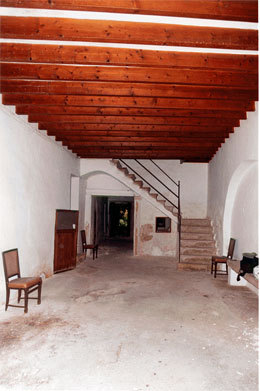


The house of Can Monroig
Text: Guillem Planells i Reus
Can Monroig is situated at 22 carrer de Can Valella and has also been known as Can Móra. This building is located in the Inca’s Jewish neighbourhood which was formed within Sant Francesc, Virtud, Can Valella, Pare Cerdà, Call streets.
The current two-floor house is dated from the 16th century and it has a smooth façade decorated with little stones, similar to the façade of Can Siquier. The openings are formed by multiple windows, except for the main entrance which is finished with a round arch made of stone similar to the bottom of the façade. As well as in the mentioned Can Siquier, inside Can Monroig there are some remains of Baroque style as handle-shaped arches.
This house was closed for many years and with the passage of time it had deteriorated. Some years ago it was bought and its new owners restored it which came to light many architectural elements which highlighted the medieval origin of the house. The gothic elements of the building that can be seen today are formed by some pointed and rounded arches, and an entrance and a window both right angled. Thus, the inside of the house consists of two bays. In the first bay, there are three rooms which are perpendicular to the front separated by arches. It is in the space that can be considered the entrance of the house, where there is a Baroque handle-shaped arch and another round and white arch that leads to a room where there is a pointed arc, currently it is bricked-in.
The first bay is separated by a second wall which opens an access formed by an angle right entrance between two bays, and on its right, a window formed with a round arch can possibly be dated from the Medieval Age because of the resemblance to others entrances and windows from other Gothic buildings of the same time (Palau de l’Almudaina in Palma, Palau dels Reis de Mallorca in Sineu, Torre dels Enagistes in Manacor, etc.). It is also possible that in previous time these windows would have been an entrance.
In the second bay on the left wall there is a stone entrance with a right angle and a wooden lintel, then a square window and another entrance, now finished with a right angle, but originally it was finished with a rounded arch, like the one situated in the separating wall between the two bays. For its shape and situation, we think they are also medieval remains.
At the back of the house, is found a courtyard, ant to the left there is a space opened by a handle-shaped baroque arch, which in its interior we can observe the remains of another older handle-shaped arch. There is a previous one, much older, one can still be seen in its place which is made of stone and it was pointed. In addition, to the right, you can still see the start of what must have been the beginning of the nerve crossing of the remains vault. On the opposite of the arch, the remains of the pointed is still visible and with the width of the space, one might think that it was a space covered by two tranches of vault.
Once discovered, these architectural remains were taking dated back to the Jewish area in the 14th century, where the house is located. It is easy to think that we talk of Gothic that probably date from this century or even from the 13th.
In addition to these findings, the restorations of the house has replaced all the stone floors and made a number of interesting findings. Also, note to the right of the entrance, is found an old oven placed below the level of the street, as well as a whole series of stone vats and tanks scattered throughout the house connected through clay pipes. In addition, we know that the house also has a wine cellar and a cistern is still conserved.
In the courtyard there are two tanks, one larger than the other. Inside the smaller, some steps were discovered by which it was possible to access into it and inside there is a bronze tap with anthropomorphic decoration (two eyes and a nose).
Unlike the various arches formed by the architectural remains, in the case of the findings of the oven, the various tanks, cisterns and wells, we are unable to date them, because until now they have not been studied by archaeologists and, therefore, we have no convincing data that allows us to know what its use was or when were built. Also, keep in mind that Can Monroig is a house that has undergone many changes and additions over the centuries, which makes further study necessary.
But, however repeat some dates are important enough which, in the future, and after a good archaeological study, could help to decipher these different findings.
So one again, we note that the house is located in the area which, in the 14th century, was the Jewish area of Inca. Therefore, we believe it necessary to note some bibliographic data on Jews in Mallorca, Inca and on the erection of our Jewish area, without forgetting Palma’s Jewish area too. Inca’s Jewish Quarter
We must seek the origins of the Jewish presence in Mallorca in the fifth century, both in Mallorca and Menorca, as well documented by a letter from Bishop Sever in 417 BC. Also, thanks to several sources, we know that during the Islamic domination of the island (902-1229) there was also a significant Jewish community. So, when Jaume I conquered Mallorca in 1229, he not only found a significant Jewish settlement in Palma, but also in other parts of the island including Inca, Petra, Montuïri, Felanitx, Sineu, Alcúdia, Sóller and Pollença.
The Jewish community of Inca was already in 1232, when Jaume I granted remuneration to the Jews of Inca, Almudaina de Gomara (Palma), Petra and Montuïri. A 1240 document confirms the presence of Jews in Inca. Moreover, the Conqueror gave his support to Jews of Mallorca granting them the privilege of Royal protection confirmed by him in 1247.
We have more information about the Jewish community of Inca comprising the fourteenth century. This data is documented in the Morabatí books of 1329 and 1336. We also know that in recent years the Inca Jews still didn’t have an area to live together, but they lived scattered over different parts of the town. Instead, they had a good organisation under a Jewish institution known as Aljama, which was approved by the king and had counsellors, secretaries and attorneys, as well as enjoying some public independence.
Due to the significant and constant clashes in 1346 between some members of the Jewish and Christian communities King Peter IV of Aragon gave the order to raise a Jewish quarter within the town of Inca. Despite the royal decree, and because of the large decline in the Jewish population after the plague of 1348, it was not until 1372 when a Jewish quarter was definitively settled in Inca. Although in 1353 the Judges had asked the governor where the Jewish quarter would be placed and it was assigned in the district of Sant Bartomeu, specifically in the carrer de Martí Metge, but the Jews did not like the site because of the poor condition of the houses, many of them in a state of ruin, and appealed to the king to grant them another place to settle. Finally, King Peter IV of Aragon, as we have seen, in 1372 gave them the new and current, place located in carrer d’en Pascolet found in the district of Sant Francesc. The assault on the Jewish quarter in 1391
The Jewish quarter of Inca, similar to the case of Palma, was surrounded by a wall and closed by two gates, one of them was in the carrer de Sant Francesc. It is confirmed in the documents of 1372 where the Jews asked for a gate to be built on the carrer de Sant Francesc. However that, Jews were told their own district be as closed to the rest of the town was enough to stop the fighting and assaults on Jewish houses by Christians and in 1391 they assaulted the Jewish quarters of Palma and Inca. Christians brought out by various disturbances which perpetrated numerous acts of looting and destruction, the killing of a large number of Jews (regarding Inca; the documents speak of an almost total extinction) and the set into fire to houses and shops within the Jewish quarter, leaving the entire neighbourhood devastated. Retouring to Can Monroig...
As a conclusion, and having the house of Can Monroig located where the Jewish quarter once was, one last observation leads to the pointed arch that places us at the entrance of the house. In this arch, at the top, it is still possible to see the remains of burnet stone and a photograph of the same arch made just before cleaning, shows us the remains of a fire had. In the second bay of the house, even after a post that gives access to the left, there is another entrance showing the wooden lintel completely burnet.
The burnet remains must have been the result of a major fire suffered by the house and the fact that they are in Gothic architectural remains leads us to think that they could be directly related to the assault on the Jewish quarter in 1391 (as which is documented in the Història de Mallorca, by Pere Xamena) and during the riots, houses and shops were burnet. Also noteworthy, is the first volume of the Història de Mallorca published by Editorial Moll, which states that “the lower classes of the city joined with the peasants storming the Jewish quarter, burning houses and killing 300 Jews {...} the same attack suffered by Jewish quarter of Inca.
Text: Guillem Alexandre Reus i Planells, “L’art gòtic a Inca. Arquitectura civil”, a: XIV Jornades d’Estudis Locals, Ajuntament d’Inca, Inca, 2013, p. 167-170.
2 notes
·
View notes
Video
youtube
The Grand Dragon Ladakh in Leh, India (Asia). The best of The Grand Dragon Ladakh in Leh Hotel. Welcome to The Grand Dragon Ladakh in Leh, India (Asia). The best of The Grand Dragon Ladakh in Leh. Subscribe in http://goo.gl/VQ4MLN The general services included will be wifi available in all areas. billiards, badminton equipment, cycling and hiking. In the section of bars we will be able to enjoy fruits, room service, breakfast options, special diet menus (on request), chocolate or cookies, bottle of water, restaurant, on-site coffee house, kid meals, bbq facilities, kid-friendly buffet, breakfast in the room and packed lunches. For health facilities have sauna, fitness, steam room, fitness centre, fitness/spa locker rooms, massage chair and hot tub/jacuzzi. In relation to the transfer we will find bicycle rental (additional charge), airport shuttle, secured parking and car hire. For the reception services we can find ticket service, newspapers, luggage storage, concierge service, safety deposit box, lockers, 24-hour front desk, currency exchange and tour desk. Within the common spaces we can enjoy garden, outdoor fireplace, library, outdoor furniture, sun terrace, shared lounge/tv area, terrace, picnic area and games room. For family leisure we can have kids' outdoor play equipment, baby safety gates, children television networks, books, dvds, music for children, kids' club, board games/puzzles, indoor play area, evening entertainment and children's playground. The cleanliness of the facilities will include laundry, dry cleaning, trouser press, shoeshine and ironing service. If you stay for business reasons on the premises you will find business centre, meeting/banquet facilities and fax/photocopying. gift shop and shops (on site). We will be able to highlight other benefits such as heating, lower bathroom sink, wheelchair accessible, non-smoking rooms, emergency cord in bathroom, lift, facilities for disabled guests, designated smoking area, toilet with grab rails and vip room facilities [https://youtu.be/CxKKztsROMo] Book now cheaper in https://ift.tt/2KRx5yF You can find more info in https://ift.tt/2N68tP2 We hope you have a pleasant stay in The Grand Dragon Ladakh Other hotels in Leh Ladakh International Centre https://youtu.be/7oe-KWfbMuE Grand Himalaya https://youtu.be/7zUUM3pbcIU Offbeat Residency https://youtu.be/Y0mThCHrJpA Kora Leh https://youtu.be/JsTfGTeqfTw The Maitreya Ladakh https://youtu.be/rPR1zMOOFzY Saboo Resorts https://youtu.be/xhwbx2w0jgI The Indus Valley https://youtu.be/9BKdu-59UzY The Zen Ladakh https://youtu.be/St4VqVc_w0A Hotel Glacier View https://youtu.be/uYBytreRhKE Other hotels in this channel Hotel Sant Pere II HSPII https://youtu.be/7y2DuahhKm8 Four Points by Sheraton Manhattan Chelsea https://youtu.be/_TlCWfBu_Is Hotel Diamant https://youtu.be/ebX_wr9ChoI Hotel Polamar https://youtu.be/j4LhujTIsWg Son Penya Petit Hotel https://youtu.be/YAhytpzHoAY OD Barcelona https://youtu.be/iixo0Zu5suw Fitzpatrick Grand Central https://youtu.be/hSdCGA2elC4 Vivaldi Hotel Montevideo https://youtu.be/tOeDUCwwLQA Le Clos Medicis https://youtu.be/VJ6kImH54rs Hotel Dome Las Tablas https://youtu.be/TtncFpdV2Co Piergiorgio Palace Hotel https://youtu.be/IJQDt1wjoPQ Kleivstua https://youtu.be/wOwqjyg7iks Hotel Elysee by Library Hotel Collection https://youtu.be/2i2_20vUGCY Hotel Wernerwald https://youtu.be/uKosPc0Deu8 HolyPro Hotel https://youtu.be/sCvFakf5WEY In Leh we recommended to visit In the India you can visit some of the most recommended places such as Thikse Monastery, Shanti Stupa, Valle de Nubra, Magnetic Hill, Palacio de Leh, Namgyal Tsemo Monastery, Phyang Monastery, Hall of Fame and Central Asian Museum. We also recommend that you do not miss Sankar Monastery, Explore Ladakh, Spituk Gompa, Main Buddha Temple, Thisuru Stupa Shastang Leh, Gomang Stupa, We hope you have a pleasant stay in The Grand Dragon Ladakh and we hope you enjoy our top 10 of the best hotels in India based in The Grand Dragon Ladakh Tripadvisor Reviews. All images used in this video are or have been provided by Booking. If you are the owner and do not want this video to appear, simply contact us. You can find us at https://ift.tt/2iPJ6Xr by World Hotel Video
0 notes
Text
GRAND Turismo racing takes on a new form in a few days when the Electric GT Championship gets going at the Circuit Paul Ricard in France.
The event, on November 25, will be the first of the world’s first 100 per cent zero-emission GT series, which will presumably feature mainly Teslas.
French racing legend and Formula 1 Grand Prix winner Jean-Pierre Jabouille, Le Mans winner Stéphane Ortelli and EGT Drivers’ Club member Olivier Lombard took a race-prepared Tesla Model S around the 3km circuit last week when the EGT people announced its headquarters would be built at the Circuit Pau-Arnos – with the new building the principal hub for test and development programs.
The region is set to become an incubator for technology and clean energy.
As part of the launch of Electric GT, celebrated artist Johannes Stoetter was commissioned to create a “racing’s past meets racing’s future” work on the historic Spanish Terramar circuit which opened in 1923.
Stoetter, who claims Italian nationality despite his Dutch name, created a realistic 3D image on the concrete surface of a Tesla GT racer alongside a 1934 Bugatti Type 59 – with a bit of help from Swedish artist Vilja Vitkute.
But while the Electric GT category is big news, the Terramar circuit itself is much more intriguing.
Few people had ever heard of it, because unfortunately the Autódromo de Sitges-Terramar was not on the racing calendar for long.
It was a huge project, the brainchild of local Sitges auto identity Frick Armangue, who aimed to turn the quiet seaside town about 30km from Barcelona, into an international motorsport mecca.
It took about a year, 4 million pesetas and 3.5 million kilograms of concrete to transform a rocky outcrop into a 2km circuit with daunting 60-degree banked turns.
It was a magnificent venue, one of the few banked circuits in the world.
Brooklands was first, in 1907, the came Monza in 1922 and Terramar was ready just a year later.
A fourth oval banked track, the Autodrome de Linas-Montlhéry, just outside Paris, followed 12 months later.
Terramar, actually more of a jelly-bean shape than an oval, opened on October 28, 1923, with a 200-lap Spanish Grand Prix for cars of up to 2.0 litres.
Only seven of the 11 entrants arrived on the start line, among them prominent Brit racer Count Louis Zborowski, who was one of the world’s wealthiest young men, with his American Miller.
The event drew a big crowd and at the end of the 200 lapper, only five cars were still running, the winner being French driver Albert Divo, one of the top racers of the 1920s, at the wheel of a Sunbeam.
His average speed was an astonishing 155.89km/h. Zborowski was second, 56 seconds behind, with Alfonso Carreras a further 20 seconds astern in an Elizalde.
It was a great race and the track’s future looked good, although it tested every driver’s mettle and was sometimes referred to as ‘Terrordrome’.
There were no escape roads and the inside of the steeply banked curves were solid rock outcrops while anyone who overshot the outside would find themselves in space, way above tree level.
But it all came to a very abrupt end.
Senor Armangue and his committee were unable to pay the army of workers who built the great track.
The enraged workers then seized all the gate money, leaving the organisers in the embarrassing position of being unable to pay the winning drivers.
The world of motorsport instantly blacklisted Terramar, although the Catalan Motorsport Association tried to keep the place alive.
There were some motorcycle races in the early 1930s, but they didn’t make enough to keep it going, and the circuit was abandoned.
The lap record stood at 45.8 seconds, clocked by Count Zborowski in the Miller, and it stood for 89 years!
Of course, that was largely because there were no other big races held, but it illustrates the great pace of the early 1920s.
The record now stands at 42.6 sec – set by Carlos Sainz in an Audi R8 LMS in a Red Bull promotion.
That’s 3.2 seconds quicker, but in a 5.2-litre V10 with 450kW, all-wheel drive and 7-speed sequential shift.
The Miller had an 88kW 2.0-litre motor, driving the back wheels through a three-speed manual – and on the skinny tyres of the era.
Terramar is still there to this day, and in surprisingly good condition, thanks to quality construction and Catalonia’s temperate climate.
Car companies and clubs occasionally have functions there and the owners have a chicken farm and some sheep in the centre portion.
There’s also talk of them trying to develop it into a resort.
But what could have been the pride of Spain is now known – by those aware of its existence – as the ‘ghost’ track or ‘the world’s loneliest track.’
An odd spot to promote the Electric GT Championship, but who knows, the spirit of Terramar might yet return.
Carlos Sainz on the Terramar track in 2012.
Autòdrom de Terramar, Sant Pere de Ribes, Sitges. Imatge d’una cursa del 1924. 90 anys després de la construcció del circuit, els propietaris han endegat un projecte per fer-hi un complex hoteler i lúdic, 21/11/2013.
Ghost track returns to haunt ‘Tesla’ series GRAND Turismo racing takes on a new form in a few days when the Electric GT Championship gets going at the Circuit Paul Ricard in France.
0 notes
Text
#SummerIsHere: Watch The Trailer And Plan Your Adventure
Winter is coming, and sooner than you might think. That’s right, the biggest TV event of the year is set to hit the screens soon. But before that, as you may have noticed: #SummerIsHere. And if you’re looking to make the most of it, now’s the perfect time to immerse yourself in the world of the hit TV series in various locations around Europe. Watch our trailer below, and then find out the top places to go to experience it all.
youtube
County Antrim, Northern Ireland
Dark Hedges. Image by Lindy Buckley via Flickr Creative Commons
The Dark Hedges are near Ballymoney, and are one of Northern Ireland’s most iconic historic sights. The avenue of tightly twisted trees was planted in the 18th century and features in the series. You’ll also find Ballintoy Harbour less than 15 minutes drive away. Ballintoy is also home to the Carrick-a-Rede cliffs in series two.
Further along the coast, to the east, you’ll find the Caves of Cushenden, the scenic spot where Melisandre, the Red Woman, gave birth to the sinister shadow creature in Renley’s storyline. A lot of the filming also took place in Shane’s Castle is a 14th century ruins, found by the shores Lough Neagh.
Thingvellir National Park, Iceland
Þingvellir
Thingvellir National Park’s rocky pathways might look familiar. In real life, Thingvellir is one of the key stops on the Golden Circle – the sightseeing tours that take in the best sites in the countryside around Reykjavik. Snæfellsjökull is Europe’s largest glacier, but also doubles as the site of the ancient Wildling fort. Just outside Akureyi, Iceland’s second largest town, you’ll find the Volcanic lake, Mývatn. The surrounding frozen lava field was where the army set up camp in season three.
Find holidays in Iceland
Mdina and Rabat, Malta
Mdina
The neighbouring historic cities of Mdina and Rabat are in the north of Malta. In Mdina, you’ll probably recognise the city gates, and Pjazza Mesquita. Rabat’s St Dominic Monastery doubled as the Garden of the Red Keep. The city’s Verdala Palace also featured, as did the nearby Mtahleb Valley. That’s where they filmed the dramatic final shot of the first season.
Search for holidays in Malta
Split and Dubrovnik, Croatia
Courtesy Dubrovnik Tourist Board
Dubrovnik’s Old Town is home to the Forts of Minceta and Bokar, Gradac Park, St Dominic Street and the Pile Gate. Just outside Dubrovnik, you’ll find the Tresteno Arboretum, which featured heavily in season 3. And further along the coast, Split has also been featured a lot in the series. In particular, the cellars of the stunning Roman era Diocletian Palace and the nearby Klis Fortressa and Kasterl Gomilica.
Find holidays in Croatia
Seville, Girona and Cácares, Spain
Alcázar of Seville
Seville’s Alacazar palace convincingly played the part of Sunspear, the castle of House Martell. Several spots in the city are also set to feature in season seven, including the amphitheatre of the Roman city of Italica.
Over in Girona, The Cathedral of St Mary of Girona can be spotted in the King’s Landing scenes.Sant Pere de Galligants a former abbey, was featured during Arya’s fight with the Waif. The nearby Plaça dels Jurats was the site of Sheelba Square.
Girona is also within easy driving distance of Barcelona, and along the way you’ll find another location. The Castell de Santa Florentina in Canet de Mar.
Cácares is UNESCO-listed for its historic buildings, and the Old Town is a mix of Roman, Gothic, Islamic and Renaissance architecture. The city’s famous Moorish fort, the Castillo de Trujillo was one of the key locations in season seven.
Find holidays in Spain
Morocco
Essaouira. Image by Lawrence Murray via Flickr Creative Commons
Morocco doubled as the towns of Astapor and Yunkai. The famous fortified walls of the city of Essaouira were Astapor, where Daenerys liberated the slave army known as the Unsullied.
Doubling as Yunkai, you might have already recognised the village of Aït Benhaddou. A particularly fine example of traditional Moroccan architecture, the village – found on the historic trading route between the Sahara and Marrakech – has featured in many films and TV series before. Want to explore a bit more? Our��guide to Morocco is here.
Find holidays to Morocco
Have we inspired you to take a trip? Let us know where you’re going this summer using #SummerIsHere.
The post #SummerIsHere: Watch The Trailer And Plan Your Adventure appeared first on lastminute.com Blog.
from lastminute.com Blog http://www.lastminute.com/blog/summerishere-watch-the-trailer/
0 notes
Video
youtube
Places to see in ( Tarragona - Spain ) Catedral Basilica Metropolitana Primada de Tarragona The Cathedral of Tarragona is a Roman Catholic church in Tarragona, Catalonia, Spain. Located in a site previously occupied by a Roman temple dating to the time of Tiberius, a Visigothic cathedral and a Moorish mosque, it was declared a national monument in 1905. Tarragona Cathedral is in transitional style from the Romanesque to the Gothic one. It has a basilica plan with a nave and two aisles, a transept with unequal arms, three semicircular apses with deep presbyteries. The apse has three windows in the lower part, and other seven in the upper one, of ogival shape. The unfinished main façade of Tarragona Cathedral has three portals, corresponding to the nave and the aisles; the central one is in a Gothic style with similarities to that in the Cathedrals of Amiens and Reims, with ogival arcades, while the other two are in Romanesque style. The main gate is surmounted by a large rose window, similar to that in the Monastery of Sant Cugat or in the Cathedral of Majorca. The twelve spokes represent the twelve tribes of Israel, or the apostles. It has a diameter of 11 meters. The two lateral portal have also smaller rose windows. Tarragona Cathedral includes the following chapels, starting from to the right of the entrance towards the choir: Chapel of the Virgin Mary (1520). The altarpiece, coming from the parish church of Solivella, was executed by Mateu Ortoneda in the early 15th century. Chapel of the Virgin of Montserrat, with an altarpiece from the church of Santes Creus, begun by Guerau Gener and finished by Lluís Borrassà in the early 15th century. Chapel of the Conception. in Baroque style (1674), with works by sculptor Francesc Grau and painter Francesc Tramulles Roig. Chapel of St. Fructuous and St. John, designed in Renaissance style by Pere Blai Chapel of the Holy Sepulchre (1494), housing a 4th-century AD Roman sarcophagus with Gothic additions (Gothic made by an anonymous Valencian sculptor) Chapel of the Holiest (1592), in the right transept. It features a large triumphal arch as entrance, an octagonal dome, three chapels with semicircular arches and works from Jaume Amigó, Pere Blai and Bernat Cáceres Chapel of St. Barbara (14th century) Chapel of St. Mary de los Sastres, built before 1350 and later renovated. It has a hexagonal plan and an altarpiece (1368) by Aloi de Montbrai. Major Chapel, featuring a notable Gothic sculpture by Pere Johan (1426–1434) in polychrome alabaster Chapel of St. Oleguer Chapel of St. Luke Chapel of St. Thomas (16th century) Chapel of the Christ the Healer (15/16th century) Chapel of the Rosary (16th century) Chapel of the Presentation Chapel of St. Francis (1584), designed by Jaume Amigó Chapel of St. Tecla, built in 1777 in late Baroque style over what was once the baptistery Chapel of St. Michael and All the Angels (mid-14th century). It contains a sculpture decoration with angels attributed to Jaume Cascalls and an altarpiece, depicting St. Michael, by Bernat Martorell (15th century) from the church of Pobla de Ciérvoles. Chapel of the Baptistery (1340–1344), with numerous sculptures featuring the Evangelists with their symbols, and other human and saint figures ( Tarragona - Spain ) is well know as a tourist destination because of the variety of places you can enjoy while you are visiting the city of Tarragona . Through a series of videos we will try to show you recommended places to visit in Tarragona - Spain Join us for more : https://www.youtube.com/channel/UCLP2J3yzHO9rZDyzie5Y5Og http://ift.tt/2drFR54 http://ift.tt/2cZihu3 http://ift.tt/2drG48C https://twitter.com/Placestoseein1 http://ift.tt/2cZizAU http://ift.tt/2duaBPE
0 notes
Text


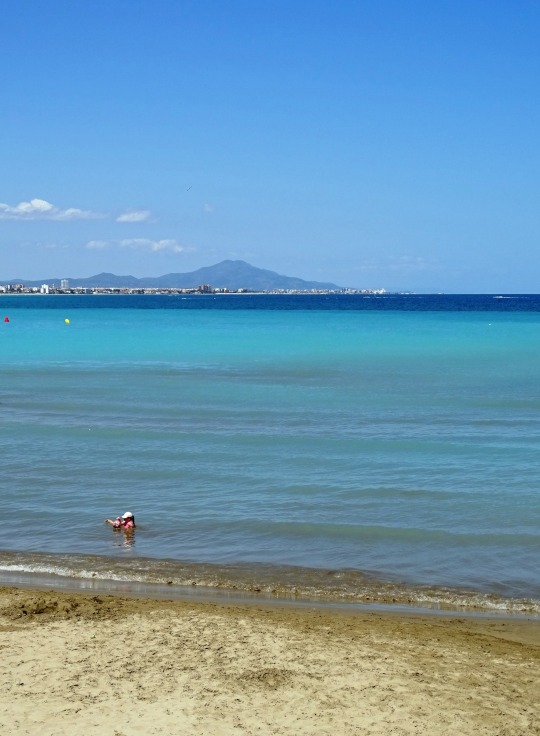

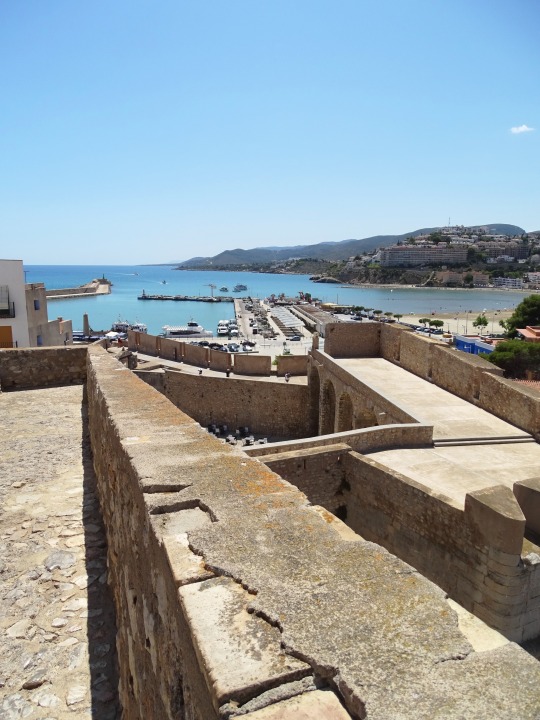
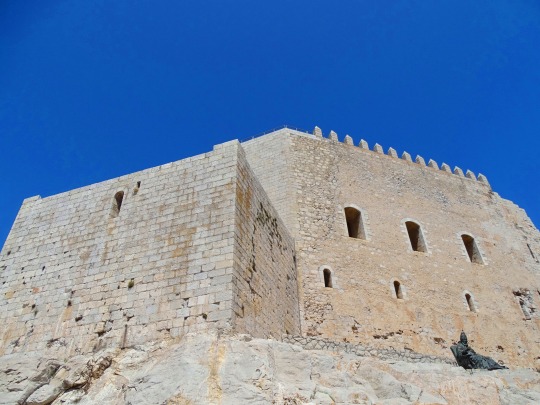
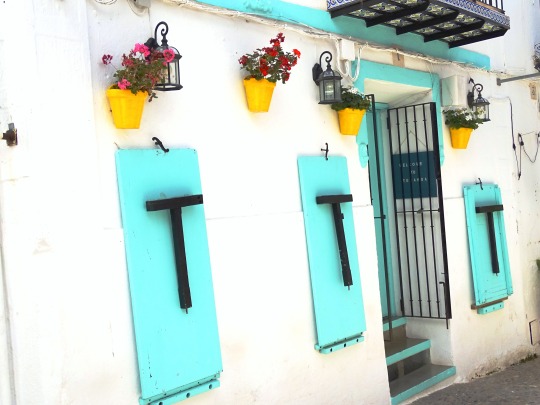

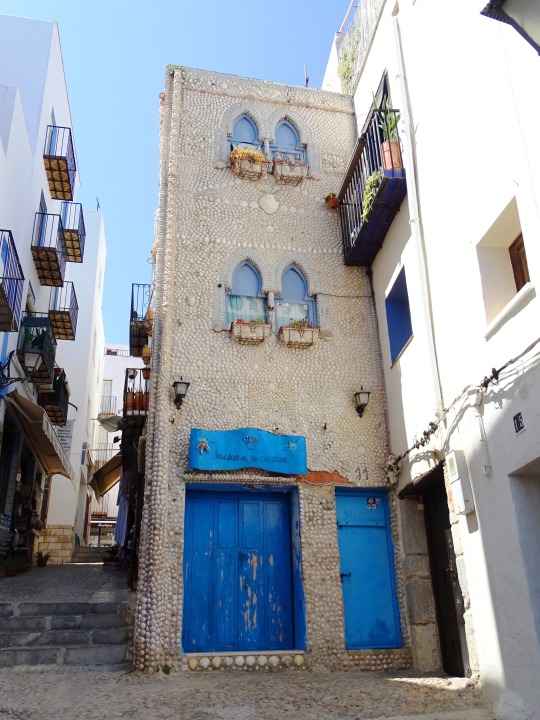


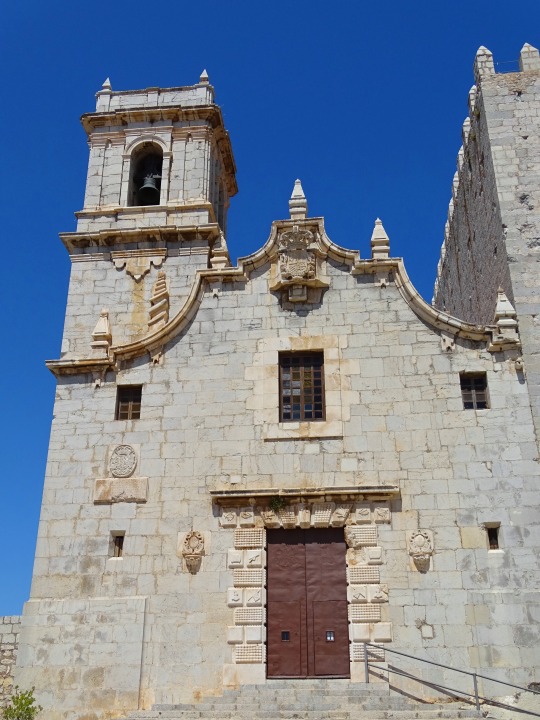



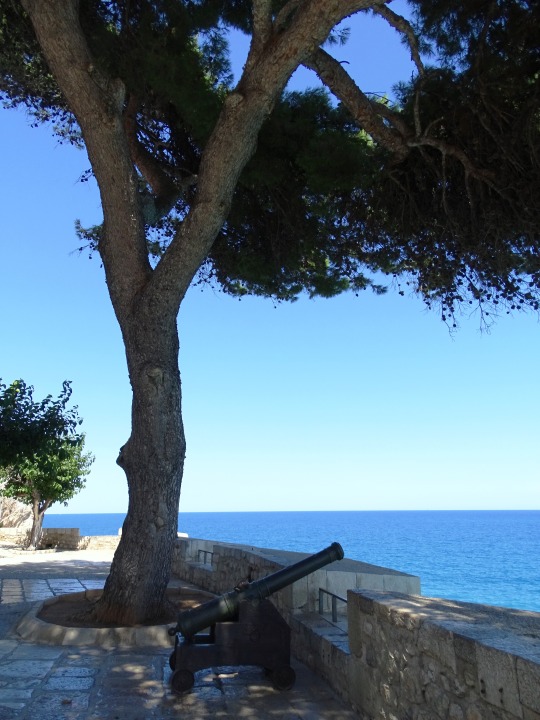
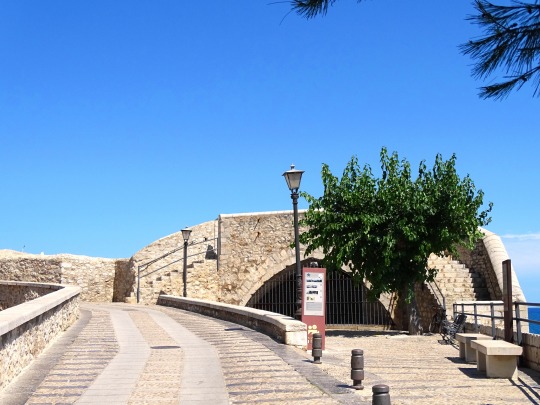


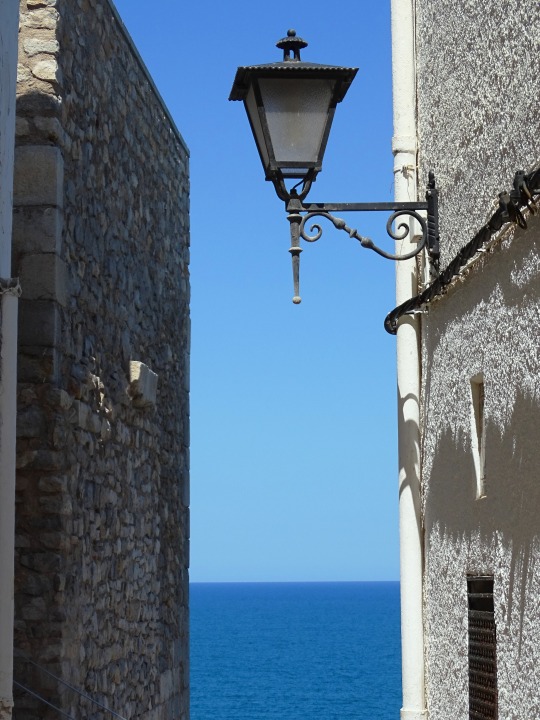

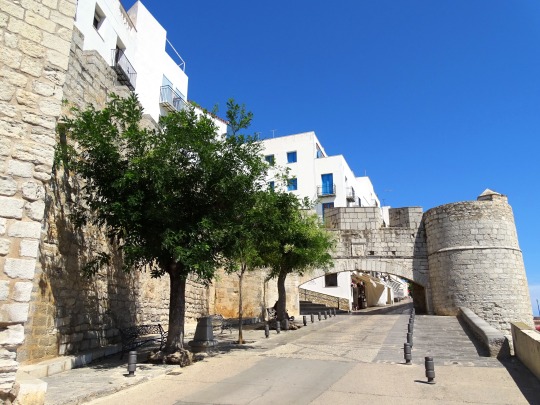
Peñíscola was reconquered by General Francisco Javier de Elío on May 25, 1814.
#Iglesia de Santa María#Mediterranean Sea#Southern Europe#Southern Spain#España#cityscape#architecture#tourist attraction#landmark#vacation#travel#summer 2021#beach#Sant Pere’s Gate#Peñíscola#reconquered#25 May 1814#210th anniversary#Spanish history#original photography#Spain#Castell de Peníscola#alley#Castellón#Valencian Community
6 notes
·
View notes
Photo










Peñíscola was reconquered by General Francisco Javier de Elío on May 25, 1814.
#Iglesia de Santa María#Mediterranean Sea#Southern Europe#Southern Spain#España#cityscape#architecture#tourist attraction#landmark#vacation#travel#summer 2021#beach#Sant Pere’s Gate#Peñíscola#reconquered#25 May 1814#anniversary#Spanish history#original photography#Spain#Castell de Peníscola#alley
6 notes
·
View notes
Text




























Peñíscola was conquered during the French occupation by the Napoleonic general Suchet, on February 2, 1812.
#Peñíscola#conquered#2 February 1812#anniversary#Spanish history#Mediterranean Sea#Valencian Community#Province of Castellón#España#Baix Maestrat#summer 2021#original photography#old town#architecture#cityscape#tourist attraction#Castell de Peníscola#Sant Pere’s Gate#Iglesia de Santa María#Ermita de la Virgen de la Ermitana#beach#Spain#Southern Europe#Southern Spain#vacation#travel#landmark
0 notes
Photo

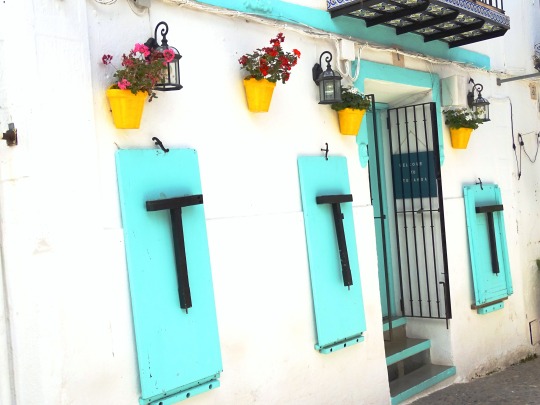

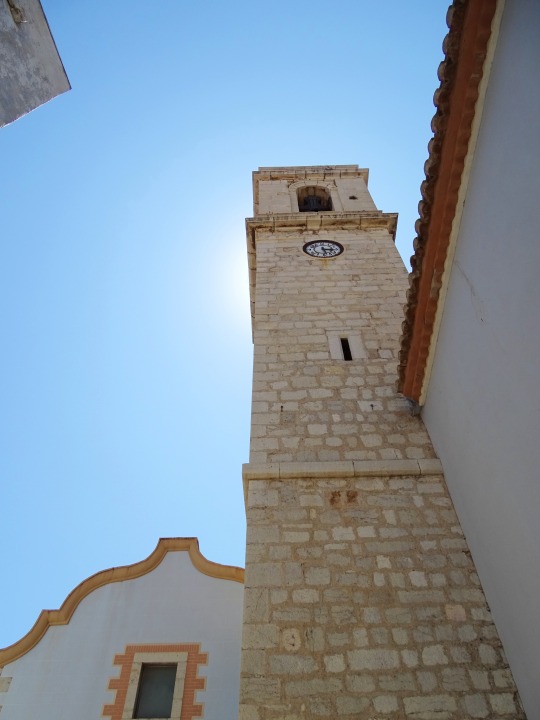

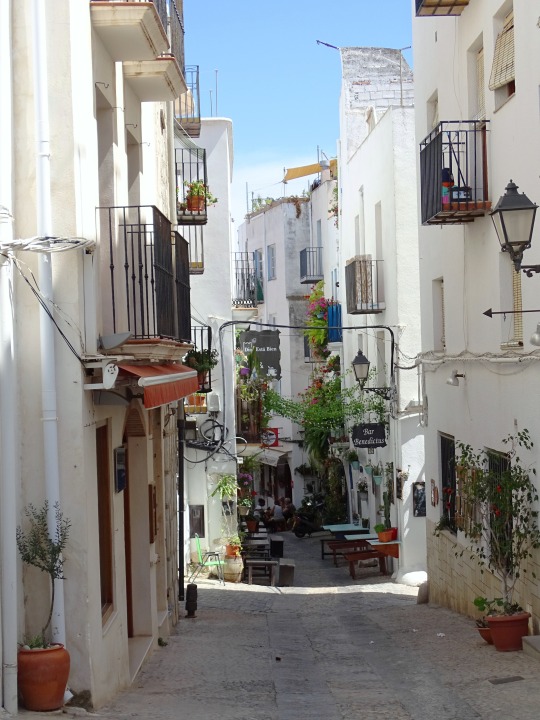


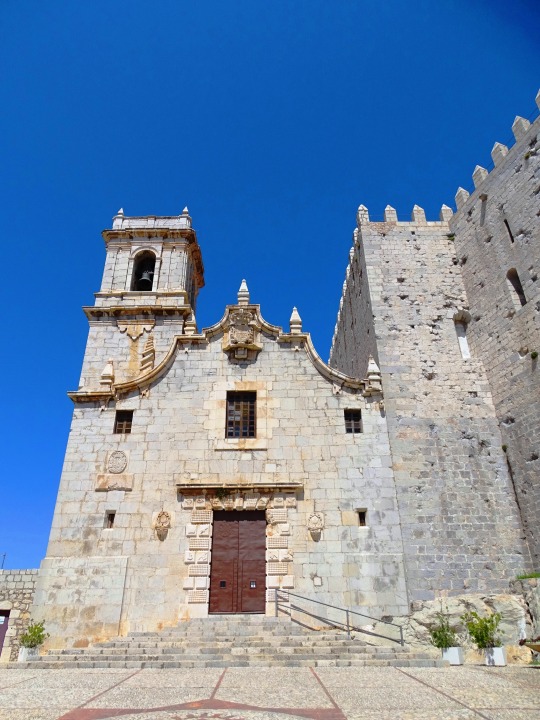
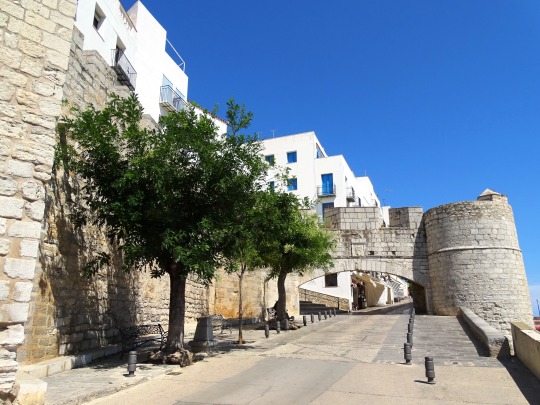
Peñíscola was conquered during the French occupation by the Napoleonic general Suchet, on February 2, 1812.
#Peñíscola#conquered#2 February 1812#anniversary#Spanish history#Mediterranean Sea#Valencian Community#Province of Castellón#España#Baix Maestrat#summer 2021#original photography#old town#architecture#cityscape#tourist attraction#Castell de Peníscola#Sant Pere’s Gate#Iglesia de Santa María#Ermita de la Virgen de la Ermitana#beach#Spain#Southern Europe#Southern Spain#vacation#travel
3 notes
·
View notes
Photo


The remains of the Medieval village Santa Creu de Rodes (Comarques Gironines, Catalonia).
This village is located next to the Sant Pere de Rodes monastery, which still remains standing nowadays. Thanks to this proximity, the village flourished because many pilgrims who visited the monastery stopped here, and it became a central marketplace of the area.
By the 13th century, the population had gone down significantly as a result of the pirate attacks, but it’s believed that the village’s decadence started with the black plague of 1345, date in which we know that 24 monks of Sant Pere de Rodes died.
It has been abandoned for centuries, but the church of Santa Helena and the South gate still stand.
An old local tradition also says that the inhabitants of the village took part in the conquest of Mallorca, and stayed to live there. Many believe that the Santa Creu quarter of Palma (Mallorca’s capital city), where there is a church dedicated to Santa Helena as well, was founded by the inhabitants of this Santa Creu de Rodes.
Photos by eidur_caminantcat
#santa creu de rodes#catalunya#història#fotografia#sant pere de rodes#history#archeology#archaeology#medieval#middle ages#medieval archaeology#travel
99 notes
·
View notes
Photo










Peñíscola, Spain (No. 14)
Sant Pere’s (Saint Peter’s) Gate, which was ordered to be built by Pope Luna in the XV century, gave the city a new access from the sea and changed the old line of city walls by creating a landing stage, which operated until the XVIII century when it was walled up and levelled off for military reasons. At the beginning of the last century the Gate was opened again, and on building the port it became an access to the enclosure over land. The Gate consists of a great arch lowered by masonry, where the shield of Pope Luna (carved by Filibert Bertalla) figures on its central wedge stone. Also from this period is the Fortín del Bonete and the first stretch of the Fountain’s Wall next to the aforementioned Gate. The Fountain’s Wall runs from Sant Pere’s Gate to Saint Anne’s battery over the Font de Dins spring. It was probably built between the XIV and XV centuries. During the most recent restoration work (1997), the original night watch passage was discovered in the upper area of the battlemented parapet which runs between the three turrets. It was found buried beneath floor coverings from a later period. This outstanding passage is 35 metres long and is formed by a walkway of lime concrete, crowned with flagstones and supported on masonry corbels. Remains of the Medieval city walls and a ,tower have also been discovered buried at Saint Anne’s battery.
Source
#Saint Peter's Gate#fortifications#citywall#medieval architecture#architecture#cityscape#summer 2021#Peñíscola#tourist attraction#landmark#travel#vacation#Spain#España#original photography#Gibraltar of Valencia#City in the Sea#Valencian Community#Castellón#Baix Maestrat#Southern Europe#southern Spain#coat of arms#blue sky#street scene#old town#tree#flora#white washed houses
0 notes